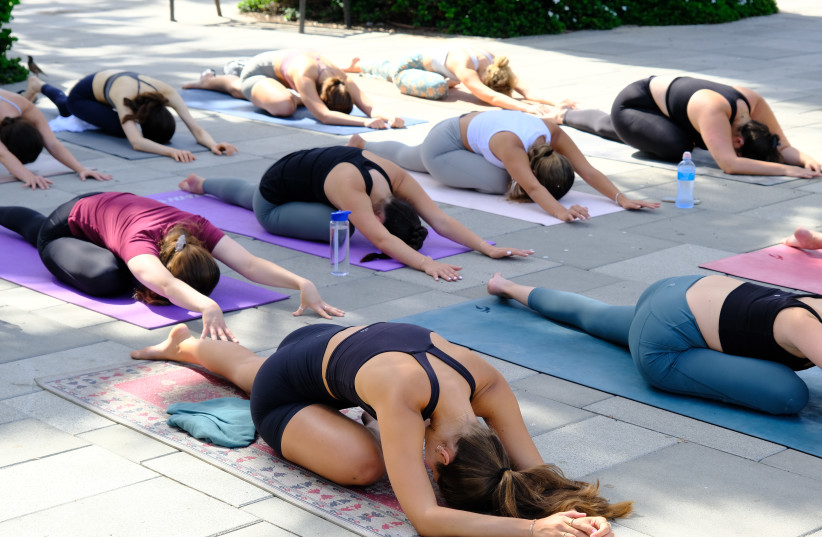Epilepsy – a chronic disease of the brain that affects about 50 million people of all ages worldwide – is one of the most common neurological disorders. A possible cause is an imbalance of nerve-signaling chemicals called neurotransmitters, but in many cases, the cause is unknown.
There are an estimated 85,000 Israelis suffering from unpredictable brain seizures, which often cause depression among its sufferers and can significantly reduce performance in school and on the job. There is also a lot of stigma against people with epilepsy, even though it is not infectious.
Now, a team in India has found that doing yoga can help reduce a person’s level of anxiety and feelings of stigma about the disease, and even the frequency of seizures. It has just been published in the journal Neurology of the American Academy of Neurology.
“People with epilepsy often face stigma that can cause them to feel different than others due to their own health condition—and that can have a significant impact on their quality of life,” said study author Dr. Manjari Tripathi of the All India Institute of Medical Sciences in New Delhi.
“This stigma can affect a person’s life in many ways including treatment, emergency department visits and poor mental health,” she said. “Our study showed that doing yoga can alleviate the burden of epilepsy and improve the overall quality of life by reducing this perceived stigma.”

For the study, which was entitled “Effectiveness of yoga intervention in reducing felt stigma in adults with epilepsy: a randomized controlled trial,” the researchers looked at local people with epilepsy who were on average 30 years old.
The researchers measured stigma based on participants’ answers to questions such as: “Do you feel other people discriminate against you?” “Do you feel you cannot contribute anything in society?” and “Do you feel different from other people?” The team then identified 160 people who met the criteria for experiencing stigma. Participants had an average of one seizure per week and on average took at least two anti-seizure medications.
Researchers then randomly assigned participants to receive yoga therapy or sham yoga therapy. Yoga therapy included exercises in loosening muscles, breathing, meditation, and positive affirmations. Sham yoga consisted of exercises that mimic the same yoga exercises but participants were not given instructions on two key components of yoga believed to induce a relaxation response: slow and synchronized breathing, and attention to the body movements and sensations during practice.
Each group received seven supervised group sessions of 45 to 60 minutes over 12 weeks. Participants were also asked to practice sessions at home at least five times a week for half an hour. They tracked their seizures and yoga sessions in a journal. After three months of therapy, participants were followed for another three months.
Reducing and eliminating stigma
Researchers found that people who did real yoga were more likely to reduce their perceived stigma of the disease, compared to those who did sham yoga. People who practiced yoga had an average score of seven at the start of the study and four at the end of the study, while people who did sham yoga had an increase in feelings of stigma from an average of six at the start to seven at the end.
Researchers also found that people who did yoga were more than four times as likely to have a more than 50% reduction in their seizure frequency after six months than the people who did sham yoga. Those who practiced real yoga were also more than seven times more likely to stop having seizures than those who did the sham version.
There was also a significant decrease in anxiety symptoms for people who did yoga versus people who did not. They saw improvements in quality-of-life measures and mindfulness.
“These study findings raise the need to consider alternative therapies and activities for people with epilepsy [who are] facing stigma,” Tripathi said. “Yoga may not only help reduce stigma, but also improve quality of life and mindfulness—and yoga can be easily pre-recorded and shared with patients online using minimal resources and costs.”
